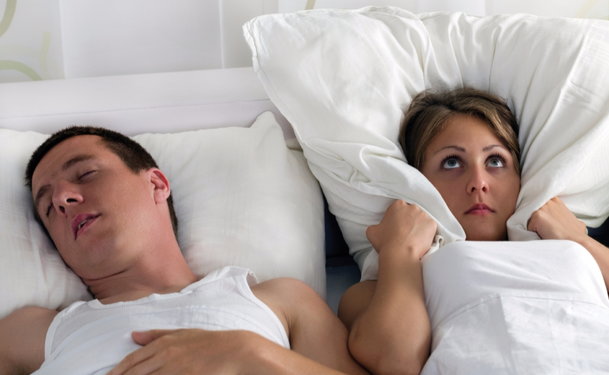Sleep Apnea Statistics
Sleep apnea is a disorder that affects breathing during sleep.
Apnea comes from a Greek word that stands for “want of breath.”
Sleep apnea is a chronic health problem and is also a progressive condition which means it can potentially worsen over time.
These cessations of breathing can last anywhere from a minimum of ten to thirty seconds and upwards to as much as four hundred per night in those with severe sleep apnea. Some individual are so plagued by the condition that they are awakened every thirty seconds a nigh with another apnea episode.
Sleep apnea is still greatly misunderstood by the medical community although research is ongoing. There are a great many individuals who are unaware that they even suffer from sleep apnea. Sometimes it takes a spouse, family member or close friend to bring the problem to the individual’s attention.
Sleep apnea is a serious health problem that can be life threatening if left undiagnosed and untreated. There are three kinds of sleep apnea- obstructive, central and mixed, of which obstructive sleep apnea is the most widespread by far.
Obstructive sleep apnea can be mild, moderate or severe. It can easily go from mild to moderate or moderate to severe. Sleep apnea is not “age-specific” and affects individuals of every age, including children.
Both men and women develop sleep apnea although it is more common in men then women, especially middle-aged men who are overweight. Part of this is believed to be due to the fact that men have a thicker neck circumference than women.
The following are some statistics regarding this surprisingly common affliction.
- Sleep apnea is prevalent in as many as an estimated 18 million Americans alone. This statistic denotes that approximately 1 in every 15 Americans, or 6.62% of the total American population have a case of sleep apnea.
- Research conducted at the University of California’s San Diego campus studied 54 African Americans and 346 Caucasians for the presence of sleep apnea. The results showed that a full 17 percent of African American test subjects had a case of obstructive sleep apnea present, compared to 8 percent of the Caucasian subjects. This denotes a hypothesis that African Americans stand an increased risk of obstructive sleep apnea.
- Two to four percent of all Americans have an undiagnosed case of sleep apnea. This accounts for approximately 1 in 50 individuals being undiagnosed.
- People that are afflicted with sleep apnea face a steep increase in chances of being part of a traffic accident. Due to the sleeplessness and lack of ability to concentrate that are associated with apnea, sufferers are six times more likely to die in a car accident. As a matter of fact, the National Highway Traffic Safety Administration has stated that drowsy driving is responsible for, at the very least, 100,000 car accidents, 40,000 injuries, and 1,550 deaths per year.
- More than 263,000 children per year undergo tonsillectomies. Most of these operations are performed due to the presence of sleep apnea in the children that is caused by the tonsils obstructing their air way.
- A bed mate of a person with untreated obstructive sleep apnea can lose a serious amount of sleep! Due to the breathing and gasping of the apnea sufferer, the bed mate loses up to an hour per night of sleep. This was discovered when a study was conducted that measured the effects of CPAP treatment in helping the bed mate to sleep.
- People that have an untreated case of sleep apnea face a risk of stroke that is four times as likely as those who are not afflicted. Untreated sleep apnea sufferers are also three times as likely to have heart disease.
- On the average night’s sleep, a sufferer of obstructive sleep apnea may experience 60 apneas per hour. This accounts for an average of 400 apneas per night!
- Roughly half of all hospital patients that have a case of hypertension are also afflicted with sleep apnea. Conversely, around half of all sleep apnea sufferers face a diagnosis of hypertension.
- According to the National Commission on Sleep Disorders Research, approximately 38,000 deaths occur on an annual basis that relate to cardiovascular problems that in one way or another are connected to sleep apnea. These problems include high blood pressure, hypertension and stroke, among others. An estimated six million American residents suffer from sleep apnea that is moderate to severe and may necessitate a late night visit to the e=emergency room. Unfortunately a great many people do not, as previously mentioned, even realize that they suffer from sleep apnea. This number is somewhere around 500,000 individuals.
As these statistics show, sleep apnea is not a problem to be taken lightly. The risks of mortality faced by those with untreated obstructive sleep apnea are simply not worth it when you consider all the types of sleep apnea treatment available.


